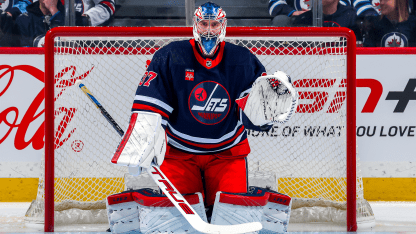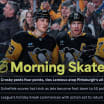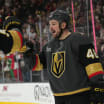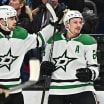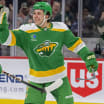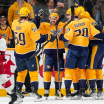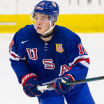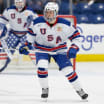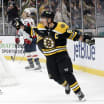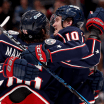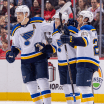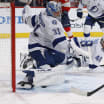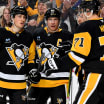When Connor Hellebuyck was 10 or 11 years old, his dad took him to a hockey store to look at goalie equipment and was surprised to find his son in the skater section looking at sticks instead.
When he asked his son why, Connor, now the No. 1 goalie for the Winnipeg Jets, showed him a “twisted” blade that would raise a puck quickly and said he wanted to remember every type of blade, so when he saw it on the ice he’d know exactly where the puck was going.
That story, told by Chuck Hellebuyck on the Winnipeg Sports Talk Podcast on Jan. 11, didn’t come as a huge surprise to Jets goaltending coach Wade Flaherty. When it comes to the skillset that has helped Connor Hellebuyck become one of the best goalies in the NHL, the way he thinks the game and anticipates plays in real time might be what stands out the most.
“Maybe that was the start of it,” Flaherty said of the story about studying stick blades at an early age. “He's such a smart goalie. The intelligence he has is a skill he has developed over the years. This isn’t something that just showed up one day, [Hellebuyck’s] been developing this skill and his ability to read the game is something we've always talked about as one of his strengths.”
Hellebuyck, who won the Vezina Trophy as the top goalie in the NHL in 2020 and was a finalist in 2017-18 and last season, is having another Vezina-worthy season in Winnipeg. The 30-year-old workhorse is 26-11-3 with a 2.20 goals-against average and a .925 save percentage that ranks first among goalies with at least 25 appearances. Before allowing five goals against the Calgary Flames on Feb. 19, Hellebuyck had a streak of 31 games without allowing more than three goals, tying him with Martin Brodeur for the seventh longest such run in NHL history.
Hellebuyck isn’t the only goalie who uses anticipation. Every goalie relies to varying degrees on being able to connect the patterns of the game and predict what will happen next, using it to inform depth decisions and save selections.
“It's almost impossible to explain everything we're picking up on,” Hellebuyck said. “There's stick curve, the amount of flex on a stick, knee placement, shoulder placement, eyes, and there's everyone else on the ice. Are they covered? Are they not covered? Does he have time? Does he have some space and who is open? I can't tell you one is more important than the other because if I see a guy looking at the net, but his stick is showing pass, I probably know he's going to pass, but vice versa, if he's looking pass but his stick is showing at the net, he could be trying to fool me and I’ve got to find more factors to make that read.”
